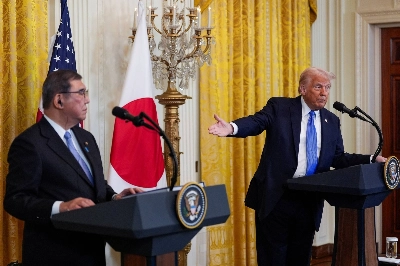Washington has offered a wide range of justifications for its tariff policies: They’re designed to raise revenue, be used as leverage in negotiations, address unfair trade practices, reduce the trade deficit and bring manufacturing back to American soil.
But these goals often contradict each other. If tariffs are lifted, revenue is lost. If unfair practices are corrected and tariffs lowered, the incentive for reshoring production to the United States weakens.
U.S. President Donald Trump — elected in part as a reaction to high inflation during his predecessor’s tenure — argues that tariffs don’t lead to inflation. His adviser Stephen Miran, who chairs the Council of Economic Advisers, argues that levies will strengthen the dollar, with only limited inflationary effects. But a stronger dollar will make American exports less competitive, weakening the impact of tariffs on trade deficits and manufacturing.




















With your current subscription plan you can comment on stories. However, before writing your first comment, please create a display name in the Profile section of your subscriber account page.